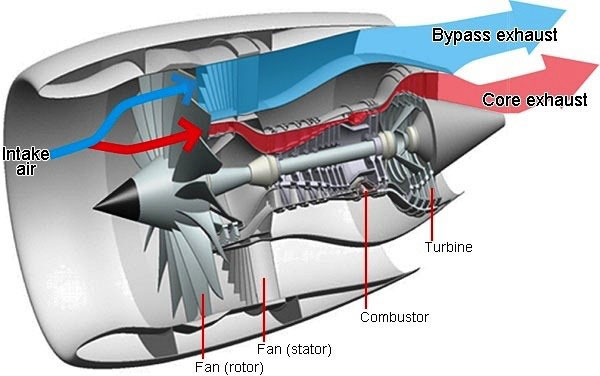Engine Fire Suppression System
Engine Fire Suppression System is a safety mechanism installed in aircraft engines to detect and extinguish fires. It uses fire detectors, extinguishing agents, and automatic shutoff valves to prevent the spread of flames. Proper maintenance and quick pilot response are essential to ensure the system functions effectively in an emergency.

Passive Fire Protection
Non-combustible materials
Aircraft engine compartments are constructed with materials that resist fire, such as steel and titanium.
Compartmentalization and Firewalls
Engine compartments are often separated from other parts of the aircraft by firewalls, which act as barriers to contain fires.
Routing and Separation
Cables, fuel lines, and other potentially flammable components are routed and separated to minimize the risk of fire spread.
Isolation
Engine compartments are designed to isolate fires, preventing them from spreading to other parts of the aircraft.
Ventilation and Drainage
Proper ventilation and drainage systems help to prevent the accumulation of flammable materials and reduce the risk of fire.
Active Fire Suppression Systems
Fire Detection
Aircraft engine fire detection systems use various sensors, including thermocouples and continuous-loop systems, to detect fires.
Fire Extinguishing Systems
- Extinguisher Bottles: Engine fire protection systems typically include one or more electrically operated fire extinguisher bottles containing a fire-suppressing agent like Halon 1301 or HFCs.
- Agent Delivery: When a fire is detected, the extinguishing agent is discharged into the engine compartment through perforated tubing or discharge nozzles.
- Engine Shutdown: In addition to fire suppression, engine fire procedures include shutting down the affected engine and cutting off fuel and hydraulic fluid supplies.
- Halon Alternatives: While Halon 1301 was previously the standard extinguishing agent, it is now being phased out and replaced with HFCs due to its environmental impact.
Fire Bottle Squibs
Fire extinguisher cartridges typically contain two electrical leads, insulating material, and a bridgewire embedded in a heat-sensitive chemical mixture.
Fire Suppression Agents
- Halon 1301: A common extinguishing agent, but its use is being phased out due to its ozone-depleting properties.
- HFCs: Hydrofluorocarbons are being used as replacements for Halon 1301.
- PhostrEx: A fire suppression agent developed for aviation applications to replace halon.
Dual Agent Systems
Some systems use both a high-rate, multi-shot extinguishing bottle for immediate fire suppression and a low-rate bottle for long-term sustained protection.
